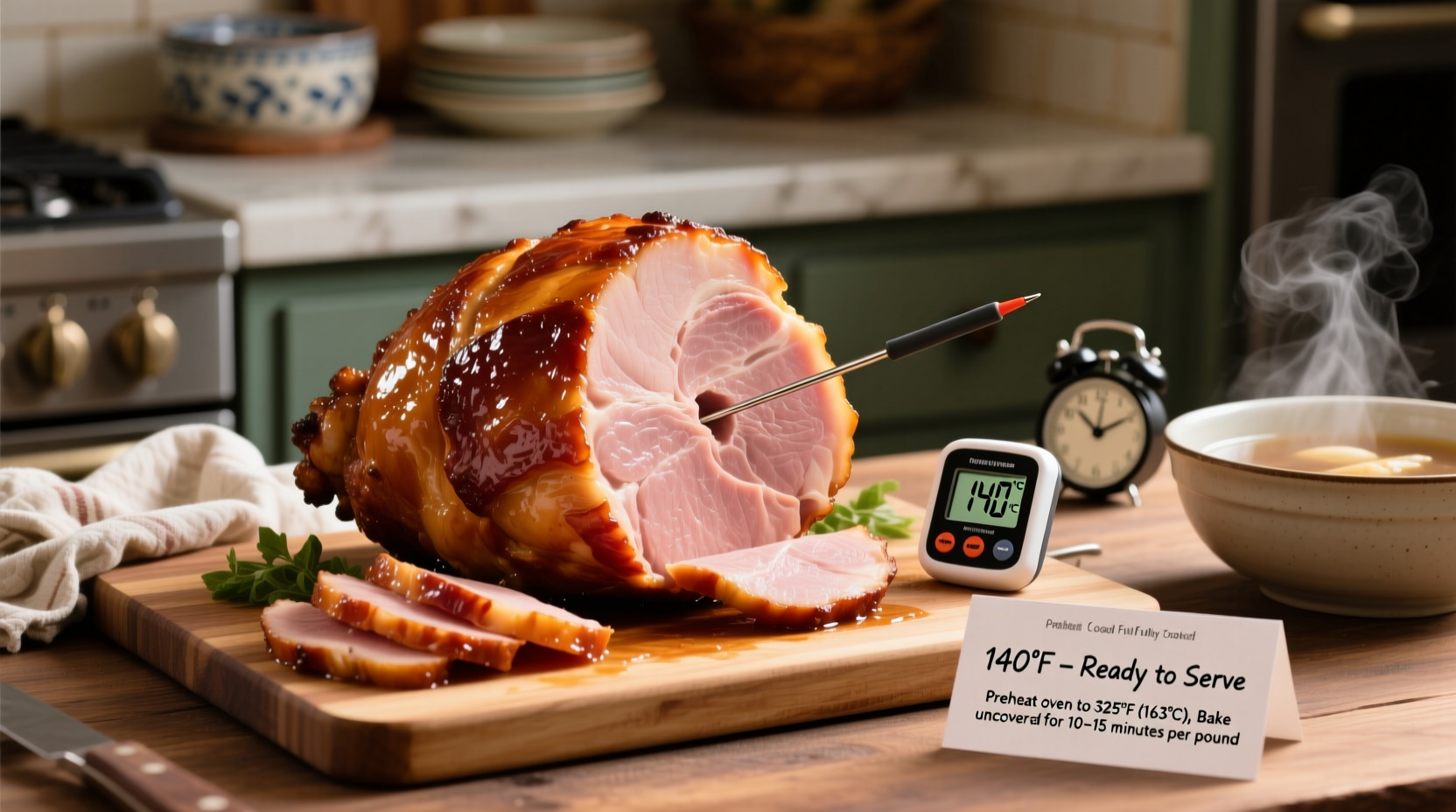Understanding Fully Cooked Ham: What You Need to Know First
Before you start cooking, it's crucial to confirm you're working with a fully cooked ham. These hams have already been cured, smoked, or baked during processing and are safe to eat cold. Check your ham's packaging for phrases like "fully cooked," "ready to eat," or "heat and serve." This distinguishes them from "cook-before-eating" hams that require longer preparation.
According to the USDA Food Safety and Inspection Service, fully cooked hams only need reheating to enhance flavor and texture, not for safety reasons. This critical distinction affects your cooking time significantly.
Your Step-by-Step Ham Reheating Process
Follow this practical sequence to ensure your ham stays moist and flavorful while reaching the proper temperature:
Preparation: Setting Up for Success
Remove your ham from the refrigerator 30-60 minutes before cooking. This temperature adjustment prevents thermal shock when placing the ham in the oven, ensuring more even heating. While your ham comes to room temperature:
- Preheat your oven to 325°F (the optimal temperature for gentle reheating)
- Prepare a roasting pan with a rack (to prevent bottom burning)
- Score the fat cap in a diamond pattern (about 1/4 inch deep)
- Apply your glaze during the last 20-30 minutes of cooking
Calculating Your Exact Cooking Time
The universal guideline is 10-15 minutes per pound at 325°F, but your specific ham size determines the precise duration. Use this reference table for accurate timing:
| Ham Weight | Approximate Cooking Time | Internal Temperature Target |
|---|---|---|
| 5-7 pounds | 50-105 minutes | 140°F |
| 8-10 pounds | 80-150 minutes | 140°F |
| 11-14 pounds | 110-210 minutes | 140°F |
| Spiral-cut | 10-12 minutes per pound | 140°F |
Note: Spiral-cut hams require less time as the cuts allow heat to penetrate more quickly. Always verify with a meat thermometer regardless of timing calculations.
Temperature Monitoring: The Non-Negotiable Safety Check
Regardless of timing estimates, you must verify your ham has reached 140°F internally using a reliable meat thermometer. Insert the thermometer into the thickest part of the ham, avoiding bone. The USDA recommends this temperature as sufficient for fully cooked products that only require reheating.

Alternative Cooking Methods Compared
While oven reheating produces the best texture, these alternatives work in specific situations:
- Slow cooker method: Low setting for 2-3 hours (check frequently to prevent overcooking)
- Grill method: Indirect heat at 325°F for 10-15 minutes per pound (monitor closely)
- Spiral-cut ham: Reduce time by 20% and cover with foil to prevent drying
Each method requires the same internal temperature verification (140°F), but cooking times vary based on equipment and environmental factors.
Avoid These 3 Common Ham Reheating Mistakes
Based on food safety data from university extension programs, these errors compromise both quality and safety:
- Overcooking beyond 140°F: Temperatures above 145°F cause excessive moisture loss, resulting in dry, tough ham
- Skipping the rest period: Let your ham rest 10-15 minutes after cooking to redistribute juices
- Applying glaze too early: Sugary glazes burn when applied more than 20-30 minutes before completion
Serving Your Perfectly Reheated Ham
Once your thermometer confirms 140°F, remove the ham from heat and let it rest. During this critical 10-15 minute resting period, the internal temperature will continue rising slightly (carryover cooking) while juices redistribute. Slice against the grain for maximum tenderness, and serve immediately for best results.
Storage Guidelines for Leftover Ham
Proper storage maintains both safety and quality. The USDA recommends refrigerating leftovers within 2 hours of cooking. Store in airtight containers for up to 3-4 days, or freeze for 1-2 months. Always reheat leftovers to 165°F for safety.











 浙公网安备
33010002000092号
浙公网安备
33010002000092号 浙B2-20120091-4
浙B2-20120091-4